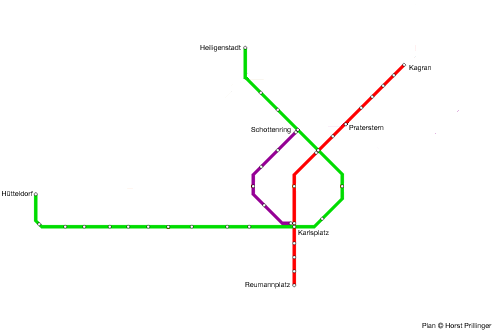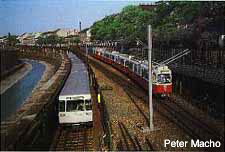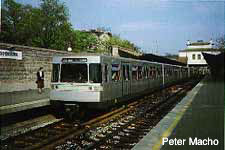The Modern Metro (U-Bahn), Phase 1 (1976-1982)
There are a number of reasons that led to the decision to build a full-scale modern metro: first, a new generation of city planners had been employed by the city; second, they managed to convince the city council that a metro system might provide an answer to the growing traffic problem, and third, Munich, a city of comparable size in Germany, had started to construct a full metro, so that a metro for Vienna became a question of prestige as well. Thus in 1966, the political animosities were put aside (up to then the metro had been pushed by the conservative opposition parties only), and the city council resolved to build a basic network of three lines — only one of these lines was actually new; the other two were merely modernisation programmes of existing lines:
-
Line U1: Reumannplatz - Stephansplatz - Praterstern
(newly built, 6.1 km) -
Line U2: Karlsplatz - Lastenstrasse - Schottenring
(converted and extended underground tram, 3.5 km) -
Line U4: Hütteldorf - Wien valley - Danube Canal - Heiligenstadt
(converted old metro line WD, 16.5 km).

Construction work started in 1969 at Karlsplatz, where all three lines meet in the system's largest interchange station. However, the first line to be actually opened was the former test track (built in 1972) between Heiligenstadt and Friedensbrücke on line U4; this was opened on 8 May 1976. The first newly built section was opened on 25 February 1978 between Karlsplatz and Reumannplatz on line U1.

Near Meidling Hauptstrasse |

Schönbrunn station on line U4 |
All sections of the basic network were in operation by December 1981. The extension of line U1 to Kagran (3.9 km), which was not part of the original plans and was added later when the Reichsbrücke over the Danube collapsed in 1976, was completed in September 1982. With this extension completed, the network reached a total length of 30 km (18.8 miles).